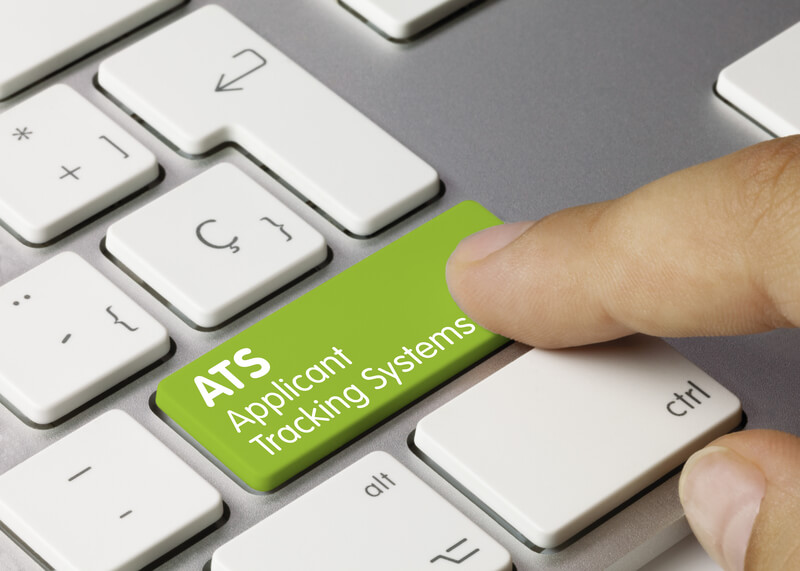How long a resume should be 2023
The length of your resume should depend on how much experience you have and what kind of job you want.
December 7, 2022

Do you find it difficult to write a cv that appeals to employers? It’s not just you. Every year, millions of people send in cvs that are unsuccessful in landing them the employment they want.
The most crucial weapon in your armory for job hunting is your CV. A strong CV can help you land a job, while a weak one may prevent you from being taken into consideration at all.
This cv writing tutorial will walk you through each stage of creating a cv that will make you stand out from the competition. We’ll offer pointers on how to style your resume, what details to include, and how to customize it using the appropriate keywords for certain professions. If you need help with completing this task we provide a professional cv writing services or you can enroll to our “Cv writing” online course. More details, here
1. Selecting a resume format (choose proper cv writing structure)
The proper format for your resume might help you play up your strengths and minimize your deficiencies. Additionally, it might make it simpler for hiring managers to read your CV and find the crucial details they need.
There are three typical resume formats available.
A chronological CV helps job candidates highlight their pertinent work history, accomplishments, and skill set. It may be used as an important source of reference information while the hiring manager thinks things over and may help them better grasp their qualifications for the job.
You can improve your chances of being asked for an interview by studying how to write a chronological CV. This article explains how to create this form of CV, when to use it, and offers a sample chronological cv that may be used as a guide while creating your own.
The most common resume style is this one, particularly for job applicants with a wealth of pertinent experience. Your most recent occupations are listed first in this arrangement, which presents your employment history in reverse chronological order.
Chronological cv writing is perfect for:
A functional cv is a style of resume that emphasizes a candidate’s abilities/skills.
The functional cv groups a candidate’s experience under skills or categories of skills as opposed to a reverse-chronological resume, which arranges experience under a candidate’s previously or currently held professional occupations, in order of recentness. Employers can now concentrate on a candidate’s qualifications, such as any necessary technical or soft skills.
Instead of listing your employment history, a functional cvs center on your transferrable talents and competencies. It aids in minimizing your lack of expertise in a certain area. Even if it can be useful in some circumstances, it’s not always the greatest. Because it could give the impression that you’re trying to hide anything, recruiters occasionally dislike the functional cv structure. Hence, take caution.
Try to include bullet points that give concrete examples of when you’ve utilized each skill you describe in your list.
It's perfect for:
A hybrid cv is a combination of the chronological and functional cvs formats. This form of cv emphasizes the skills and accomplishments section first, followed by a chronological listing of work experience. This sort of cv is advantageous because it emphasizes accomplishments and talents, presents managers with the most important information first, and helps to minimize employment gaps without disguising them.
This format can appeal to both standard and non-traditional format-preferring recruiting managers. A hybrid CV can be a fantastic approach to highlight both your professional background and your skills. It serves as the ideal resume format for a lot of job seekers.
With this structure, you would start with a succinct summary of your abilities and accomplishments then move on to a list of your previous jobs in reverse chronological order.
It's perfect for:
2. Include contact and personal information
One of your cv’s most crucial sections is this one. No matter how impressive the rest of your cv is, it won’t matter if hiring managers can’t get in touch with you. Therefore, you must check that your contact information is current and accurate.
Although it might seem simple, job applicants occasionally overlook an important contact detail in this part. Make sure it’s as simple as possible for recruiters to get in touch with you for a job interview by checking twice.
Your resume’s header should include the following details:
3. Create a compelling CV headline
Create a memorable title for your cv was one strategy to ensure that it sticks out. This is a succinct, one-line summary of your qualifications. A compelling headline can pique a recruiter’s interest and persuade them to look more closely at your CV. Additionally, it can highlight your most valuable qualifications, making it simpler for hiring managers to understand why you’d be a good fit for the position.
Your resume’s headline should be near the top, where it will be one of the first things a hiring manager or recruiter will notice.
Although everyone can use cv headlines, those with a lot of relevant experience benefit the most from them.
Use your cv headline to highlight your soft skills, tool prowess, or other strong personal qualities if you lack experience or are seeking for an entry-level position.
It’s critical to include the job title that appears at the top of the job description when composing your headline. The headline is an ideal location to use this keyword because it has the greatest influence overall, especially if you have never held the post in question.
4. Include a cv objective or cv summary statement
A cv summary, also known as a professional summary or summary statement, is a brief overview of your experience, attributes, and talents that appears at the top of your cv. Including a cv summary allows you to highlight your strongest qualifications immediately.
A research by found that most recruiters look over resumes for about six to eight seconds before making a choice on a job applicant.
BENEFITS
1. Get observed quicker
Employers will likely read your cv the first time they view it to determine if your profile is a suitable fit for the position.
This implies that your most relevant talents and expertise should be readily accessible.
A powerful summary statement at the top of your resume can improve the likelihood that your qualifications will be seen immediately.
2. Earlier emphasize your essential abilities and experience
Your cv should be legible and straightforward.
If you have a wealth of experience, your cv may appear thick or intricate.
A summary section can assist folks with a broad range of expertise in reducing complexity to the most relevant and significant elements.
If the hiring manager finds what they’re seeking for in the summary of your cv, it may also urge them to give your CV more consideration.
3. Capture keywords
The inclusion of a cv summary can facilitate the incorporation of job-specific keywords.
Read the job descriptions for positions that interest you with care.
Review sections titled “Requirements,” “Experience,” and “Education” to determine which abilities and experiences to add in your summary.
For job searchers with a ton of relevant work experience and accomplishments that can be quantified, resume summaries are great.
You might construct a resume objective statement in its place if you don’t have much work experience or are changing careers. In essence, your resume aim states what the purpose of your resume is. It is a succinct statement that explains why you wish to work in the new profession.
It ought to contain:
Your professional objectives and how the job you’re applying for can help you meet them.
5. Add ATS-friendly terms and abilities

Decide what terms and abilities you should include on your resume before moving on to the next phase. Why? Because your resume will probably be entered directly into a computer database when you submit it rather than to a real person.
For each job position, employers receive hundreds or even thousands of resumes. They lack the time to examine each one individually. Many businesses now use application tracking systems (ATS) to automatically gather, examine, and sort resumes to address this issue. In fact, ATS are now used to handle the employment process by 99 percent of Fortune 500 organizations.
Because hiring managers use keywords to scan through their applicant tracking system (ATS) database for the best job seekers, having the appropriate keywords on your CV is crucial.
Typically, these terms refer to job titles or certain talents. Your resume will remain hidden in the database if it lacks the keywords hiring managers are looking for. For this reason, it’s essential to include keywords on your resume that are pertinent to the position you’re looking for. But how do you choose the right keywords?
Simply review the job description. Make a note of the terms and abilities that are frequently used. When appropriate, include these abilities and keywords in your CV. Your resume is not a one-size-fits-all document, so for optimum results, adapt each and every one you make to the particular job you’re looking for.
6. Employment history in detail

The “job experience” part of your CV should now take center stage. When considering your resume, employers will spend the most time reading this part. If you complete this step correctly, you’ll be well on your way to building a solid CV that will get you many interviews for jobs.
The job titles you’ve had and the organizations you’ve worked with are the first items a recruiter looks at on your resume. List each position in reverse chronological order to make it simple to retrieve this information (latest job first).
Each job should have a separate subheading with the following details:
tip #1: Every cv writer should emphasize accomplishments in addition to duties
Including simply a list of one’s job responsibilities on a resume is one of the biggest errors people make. You are required to carry out these duties as part of your work. They may consist of the following:
A potential employer can get an idea of what you do on a daily basis by looking at your job responsibilities, but it doesn’t tell them how well you do it. It’s crucial to emphasize your precise successes in previous employment because of this. For instance, be sure to highlight your successes if you raised sales, decreased costs, or introduced new procedures or technology.
This not only proves your value to any company, but it also provides employers faith in your ability to do the job.
tip #2 – when writing cv don’t forget of use action verbs
When it comes to writing an interesting and attractive CV, action verbs are essential. They make it easier to understand your qualifications and boost your resume’s overall impact.
Don’t just say that you were “responsible for” anything; instead, describe how you took the initiative and made it happen. For instance, you can claim to have “coordinated” a challenging team effort or pioneered a new venture.
In addition to making your resume easier to read, utilizing strong verbs will show hiring managers that you have the kind of can-do attitude they are searching for.
tips # 3 – use active voice instead of passive.
When writing cv, try to avoid using the passive voice wherever possible.
Because it is more direct, succinct, easier to read, and makes you sound more assured and authoritative, active voice is favored to passive speech. An active voice can unintentionally lead a recruiter to believe that a candidate is knowledgeable and capable when paired with an action verb.
tip #4 – employ numbers
Utilizing statistics is one of the finest methods to make your resume stand out.
Quantify your accomplishments wherever you can with figures that show the extent of your work. You may write “developed 10 successful marketing initiatives that produced a 35% increase in leads” instead of “created marketing campaigns”.
Don’t let a few months or years of inactivity stop you from looking for a job, though. Instead, concentrate on showcasing your talents and strengths and letting your work history speak for itself.
7. Display your abilities
Make sure to add a skills section on your CV. This is the ideal time to list all of your qualifications and experience that make you the best person for the job. The abilities specified in the job description for the position you’re applying for deserve special attention. As we’ve seen, having these keywords enhances the likelihood that a hiring manager will actually review your resume, which could result in a job interview.
Hard skills and soft skills are the two categories of skills you can list in your skills section. Hard skills are the specialized knowledge and abilities required to carry out a certain work or employment. Usually, they are quantitative and simple to measure.
Hard skills examples include:
Conversely, interpersonal abilities known as “soft talents” enable you to communicate with others. Although they are more challenging to measure, they are just as significant in the workplace.
Soft skills examples include:
Because they are portable, soft skills are significant. They can be used in a variety of contexts, which means they can support your success in any line of work. Additionally, soft talents are constantly in demand in contrast to hard skills, which can soon become obsolete. Soft skills will be even more crucial as the world and technology change.
8. Describe your training and credentials.
Your CV must mention your schooling in some capacity, but where exactly depends on your particular situation. It’s generally a good idea to have your education section near the top of your resume if you are just starting out in your job. Recent graduates might boost their applications by listing relevant curriculum, societies, organizations, and extracurricular activities.
Your degree may, however, be listed at the bottom of your resume if you have been in your field for a while. This is due to the fact that at this stage of your career, potential employers will find your job experience more relevant.
Most job seekers may get away with including simply the following details on their resume unless they’re applying to a position that places a strong focus on education:
Include any professional qualifications you have obtained that are pertinent to the position you are applying for on your resume.
Under the details of your schooling, you can include your certifications. Include the certification’s name, the issuing body’s name, and the date it was issued. You may also note whether the certification is still in effect.
If you have numerous certificates, you should list them in priority order, with the most pertinent certifications appearing first.
9. Additional sections of a resume (optional)
Include extra details that highlight your abilities and accomplishments as a strategy to really stand out.
Consider including the following areas on your resume, if appropriate:
Languages
Knowing foreign languages can provide you a competitive advantage over other applicants in the global economy of today. Many companies are in need of workers that are fluent in their target market’s language of communication. On your resume, include the languages you are fluent in, starting with the one you are most proficient in. Indicate whether you speak each language conversationally, proficiently, or fluently.
Hobbies and passions
Many people think that their interests and professional lives should not mix. However, mentioning your hobbies can help employers get a better understanding of who you are as a person. If you enjoy hiking, for instance, it demonstrates both your physical activity and your feeling of adventure. The fact that you enjoy cooking demonstrates your creativity and passion for food.
Keep your list of hobbies succinct and to the point. You don’t have to describe each and every one of your pastimes in great detail. Just bring up a handful things you believe are pertinent, and then stop there.
Publications
It’s generally a good idea to mention any published work you’ve done on your resume, especially if it’s pertinent to the position you’re applying for. Most businesses adore it when candidates can write clearly and efficiently. List any published articles, blog posts, books, or even whitepapers you have produced if you are unsure about where to begin. Ensure that the title, publisher, and date are included.
Awards
Include any honors you have received on your resume if they are pertinent to the position you are looking for. Awards will make a good impression on potential employers and will help you stand out from the crowd. Include the award’s name, the occasion you earned it, and a succinct description.
Volunteer experience
According to LinkedIn 20% of employers claim to have hired a candidate due to their volunteer experience. The survey also revealed that job applicants who volunteer have a 27% higher chance of landing a job than non-volunteers. List the name of the organization, the dates of your service, and a brief summary of your duties and responsibilities when you list your volunteer experience on your resume.
Personal projects
A excellent method to show your dedication to professional development and lifelong learning is by including your side projects on your CV. Personal projects can be anything from designing websites to beginning a new business. They can also include making a YouTube channel, coding apps, publishing a book, managing an online store, consulting, or creating an e-commerce site.
Make careful to include just the personal projects that are most pertinent to the position you are applying for on your resume.
10. Format your CV so that an ATS can read it effortlessly.
If you want to receive more job interviews, properly formatting your resume is essential. Why? Since, after you submit it, your resume will probably be entered directly into an ATS. All your effort will be for naught if the ATS can’t read your resume because of formatting problems. So be sure to follow these formatting guidelines.
11. Include a cover letter
Most likely, you’ll also need to submit a cover letter along with your resume. Consider a cover letter as a brief summary of your qualifications. The idea is to pique the hiring manager’s curiosity enough for them to want to know more. For the content to be clear and simple to understand, the ideal cover letters are typically one page long.
Writing a Cover Letter
Include your entire name, address, zip code, and phone number with area code in your contact information. Your cover letter’s upper left corner should contain your contact information.
Greeting – ideally, you should identify the hiring manager by name and extend a warm welcome. Searching the corporate website or even calling the business and asking which hiring manager is in charge of this particular position will generally yield the hiring manager’s name. Consider your first sentence as an opportunity to catch the hiring manager’s attention and pique their interest in learning more about you. What skills do you possess that others lack?
Body – in this part, you must market yourself. The easiest method to do this is to give instances of your quantifiable successes. These are effective because they provide verifiable evidence of your skills. In your cover letter, only include the things about yourself that are most pertinent and admirable. Thank the hiring manager for their time in this section, and be sure to mention any attachments. Don’t sound overly eager or desperate; instead, act professionally.
Use keywords: In your cover letter, if at all possible, repeat a few of the same terms that appear in the job description. This will demonstrate to employers that you have thoroughly studied the job description and that you are aware of the qualifications they are seeking in a candidate. When applying for a job, a strong cover letter can make all the difference. Employers can use it to see beyond your cv and get a sense of who you are personally and whether you would fit in well with their corporate culture.
You may draft a fantastic cover letter by paying attention to these pointers, which will increase your chances of receiving an interview.
Finally, but not least…
Do not forget to carefully review both your cover letter and CV/resume.
One of the most crucial things you can do before submitting your application is proofread it. One misspelling or mistake might give you a sloppy appearance and cost you the job. Always double-check your resume before sending it out to avoid costly mistakes. Therefore, be sure to update your cv and check it for mistakes. It can be the deciding factor in whether or not you are invited for a job interview.
How to write cv for students? Check our tutorial

Curriculum Vitae (often referred to as CV) is the candidate’s professional history expressed in a specified format; it is one of the primary sources of candidate information in the recruitment process.
The name itself is derived from Latin and signifies “the course of one’s life”; hence, the document provides detailed information regarding work experience, as well as education, interests, and abilities.
You can write your CV yourself, using professional tips provided by recruiters and experienced CV writers. You can also take advantage of the help offered by companies specializing in professional CV writing services. If you are interested in such help – browse through our offer of services.
The style is one and universally applicable. The CV is to be written in a professional manner, contain all the necessary elements and be structured in accordance with the 3 formats in force.
If you are asking about the layout, then a professional CV should take a clean and minimalist form, without unnecessary graphics, columns, etc. embellishments. Read our guide on how to write a cv carefully.
Choosing the right format depends on your individual career path. Read our instructions – you will find there the answer which CV format will be most suitable for you.
When you’re ready to apply for a job and your resume is ready, you may wonder if you should send it in PDF or Word format.
Even though both Word and PDF have pros and cons, you should usually send your resume as a PDF.
The most important thing is to do what your boss tells you to do.
Often, the job posting makes it clear how to send your resume.
In these situations, you need to follow the rules to the letter.
If they say they want a Microsoft Word resume, send them a Word resume. If they say they want a PDF resume, or if they don’t say, send them a PDF resume.
In the past, it was better to send a Word resume for a number of reasons.
But most of them are no longer true.
When you send your resume, you want to make the best first impression possible.
Also, experts on finding a job like LinkedIn will tell you that PDFs look more professional and are easier to upload.
The length of your resume should depend on how much experience you have and what kind of job you want.
Career cushioners look outside of their companies and start looking for their next jobs before they have to. Keep your...